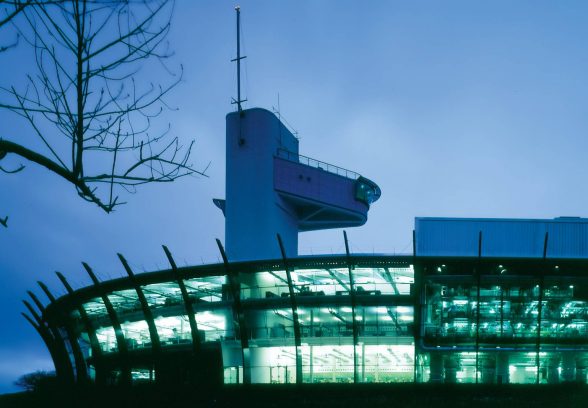This website uses cookies
This website uses cookies to enable it to function properly and to analyse how the website is used. Please click 'Close' to accept and continue using the website.



The Twentieth Century Society is delighted that Sir Nicholas Grimshaw’s Western Morning News Building has been listed at grade II*.
The awarding winning newspaper and office building, constructed in 1993, was under threat from demolition proposals and, working with the original architect, Sir Nicholas Grimshaw, we applied to Historic England for an urgent listing assessment.
Following on from Historic England’s recommendation as we reported here, the final decision has been issued today by the Secretary of State for Culture Media and Sport.
Henrietta Billings, Senior Conservation Adviser, Twentieth Century Society said: “We are really pleased that the outstanding architectural quality of this Plymouth landmark has been celebrated through listing, and that the government has not shied away from listing a building completed just 22 years ago.
We look forward to seeing more recognition of the best buildings from this period, many of which are currently very vulnerable – including No 1 Poultry in the City of London which is currently being assessed.”
In their recommendation to DCMS Historic England State recommended for listing at Grade II* for the following principal reasons:
* Architectural interest: a powerful and striking design, making particularly good use of its dramatic and steeply sloping site to create a landmark headquarters building for the Western Morning News and inspiring their brand logo; the ship-like profile of the building, its audacious, fully-glazed curved wall with steel tusks, and the central atrium are all impressive elements of the design;
* Celebrated architect: an important work by the major British architect (Sir) Nicholas Grimshaw, one of the pioneers of high tech architecture in which Britain led the way;
* Skilful planning: a careful and highly effective integration of office and production areas to create a design which brings employees together in a shared space which works for both;
* Technological innovation: a significant and influential development of fixed-point structural glazing, allowing a greater degree of sophistication with its organic curving shape and bespoke fittings;
* Building type: a rare example of a large newspaper production facility, built to a high specification, and integrating industrial and commercial functions into one building.
The former office and printing works is an outstanding example of Sir Nicholas Grimshaw’s work of the 1990s, at a time when he was establishing his name as a key figure in the high-tech movement, with buildings including the Waterloo Eurostar Terminal. Featuring a faceted and curving glass skin, the Plymouth building is a showcase for innovative technology.
There has been considerable interest and local support for the ‘ship’ which is highly unusual in our experience for a building of this date, and several high profile architects, academics and architectural historians also backed our listing campaign.
These include architects Lord Richard Rogers and Sir Michael Hopkins, and Professor Sir Peter Cook, Sir Tim Smit, co-founder of the Eden Project, Marcus Binney, President of Save Britain’s Heritage, Bob Brown, Head of Architecture at University of Plymouth and The Plymouth Architectural Trust.

Become a C20 member today and help save our modern design heritage.